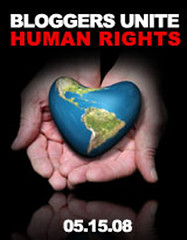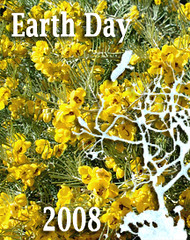A few days ago, Michelle from Monarch Health Promotions, tagged me with a meme that asks I share seven useless facts about me and then tag 12 more blogs, asking the authors to do the same. Her blog as the complete details.
Seven Useless Facts About Rich
1. I worked as stage foreman for a few years in college. The most memorable concert was Pink Floyd, an outdoor show in Sacramento. The 8-story stage took all night to strike in the rain.
2. I also worked as an assistant manager at a 7-Eleven. I was almost robbed at gunpoint by four teenagers. The police officers stopped them at the door, after one of officers reportedly decided against risking a hostage situation.
3. The first time I met Rich Little was at his home in Las Vegas. He’s the same offstage as on.
4 I’m about to serve by third three-year term as a governor-appointed state commissioner for Nevada Volunteers, which administers Americorps programs in our state.
5. I’ve worked on four major hotel casino openings while living in Las Vegas, including New York, New York Hotel & Casino. I wrote their trademarked slogan “The Greatest City In Las Vegas” as part of their pre-opening video.
6. I used to be an avid gamer, a side effect of working with Westwood Studios, the company that developed Command & Conquer and several other popular titles, before they were bought by EA Games.
7. I’ve won more than 100 paper weights in advertising, public relations, and communication. They are no fun to dust.
You know, I’ve always had mixed feelings about memes (pronounced “mi:ms” and I sometimes joke the better pronunciation is “me-me” because that is what most are all about) and professionals generally avoid them (unless they are thinly disguised as cross-blog communication conversations). I do too, but every now and again, I’m reminded that professional and corporate blogs are only a small sliver of the social media scene.
The McCann Universal study, mentioned on Monday, reminded me that 63.5 percent of all blogs are personal, with the majority of the balance evolving as citizen journalism.
So here are the twelve blogs that I am tagging (with no obligation on their part) because they frequently come up on our radar and any blogger — communicators or otherwise — might learn something from them. (No order.)
Twelve Great Blogs On Our Radar
1. Lucky Girl Trading Co. has employed social media to expand her gemstone and jewelry hobby into a growing studio business.
2. Romance Books provides mini reviews and author insights, with a focus on books by Avon Romance, which is a division of HarperCollins Publishers. I don't read romance books, but I get what they're doing.
3. Margie and Edna’s Basement began as satire revolving around the show Jericho from two “elderly” ladies. It has evolved into a bit about everything they like (or not).
4. Vubx highlights any number of interesting, odd, and creative gadgets from wooden phones to flying robot cameras.
5. Thomas Laupstad is a photographer from Northern Norway. I’ve become a fan over the past year.
6. About Offshoring by Remi Vespa features and opinions about IT outsourcing for small and medium-sized businesses. Very smart stuff.
7. Truebluetrain by Rob Schultz has been documenting his trials and tribulations on what he calls an entrepreneurial journey.
8. An Unsuspecting Notebook, penned by Chungyen Chang, shares something about life, writing, and her personal journey to find something greater.
9. RMO focuses on what it takes to be a successful Internet entrepreneur and what seems to work online.
10. Lisa’s World is a little bit everything weird, interesting, or funny. (Warning: this one is very addictive reading.)
11. Geek Mom Mashup has built her blog around intelligent conversation, moderately geeky tech talk, and very funny mom stories.
12. Designer's Depot provides a fun mix of photography tips, design hints, and artist reviews.

Seven Useless Facts About Rich
1. I worked as stage foreman for a few years in college. The most memorable concert was Pink Floyd, an outdoor show in Sacramento. The 8-story stage took all night to strike in the rain.
2. I also worked as an assistant manager at a 7-Eleven. I was almost robbed at gunpoint by four teenagers. The police officers stopped them at the door, after one of officers reportedly decided against risking a hostage situation.
3. The first time I met Rich Little was at his home in Las Vegas. He’s the same offstage as on.
4 I’m about to serve by third three-year term as a governor-appointed state commissioner for Nevada Volunteers, which administers Americorps programs in our state.
5. I’ve worked on four major hotel casino openings while living in Las Vegas, including New York, New York Hotel & Casino. I wrote their trademarked slogan “The Greatest City In Las Vegas” as part of their pre-opening video.
6. I used to be an avid gamer, a side effect of working with Westwood Studios, the company that developed Command & Conquer and several other popular titles, before they were bought by EA Games.
7. I’ve won more than 100 paper weights in advertising, public relations, and communication. They are no fun to dust.
You know, I’ve always had mixed feelings about memes (pronounced “mi:ms” and I sometimes joke the better pronunciation is “me-me” because that is what most are all about) and professionals generally avoid them (unless they are thinly disguised as cross-blog communication conversations). I do too, but every now and again, I’m reminded that professional and corporate blogs are only a small sliver of the social media scene.
The McCann Universal study, mentioned on Monday, reminded me that 63.5 percent of all blogs are personal, with the majority of the balance evolving as citizen journalism.
So here are the twelve blogs that I am tagging (with no obligation on their part) because they frequently come up on our radar and any blogger — communicators or otherwise — might learn something from them. (No order.)
Twelve Great Blogs On Our Radar
1. Lucky Girl Trading Co. has employed social media to expand her gemstone and jewelry hobby into a growing studio business.
2. Romance Books provides mini reviews and author insights, with a focus on books by Avon Romance, which is a division of HarperCollins Publishers. I don't read romance books, but I get what they're doing.
3. Margie and Edna’s Basement began as satire revolving around the show Jericho from two “elderly” ladies. It has evolved into a bit about everything they like (or not).
4. Vubx highlights any number of interesting, odd, and creative gadgets from wooden phones to flying robot cameras.
5. Thomas Laupstad is a photographer from Northern Norway. I’ve become a fan over the past year.
6. About Offshoring by Remi Vespa features and opinions about IT outsourcing for small and medium-sized businesses. Very smart stuff.
7. Truebluetrain by Rob Schultz has been documenting his trials and tribulations on what he calls an entrepreneurial journey.
8. An Unsuspecting Notebook, penned by Chungyen Chang, shares something about life, writing, and her personal journey to find something greater.
9. RMO focuses on what it takes to be a successful Internet entrepreneur and what seems to work online.
10. Lisa’s World is a little bit everything weird, interesting, or funny. (Warning: this one is very addictive reading.)
11. Geek Mom Mashup has built her blog around intelligent conversation, moderately geeky tech talk, and very funny mom stories.
12. Designer's Depot provides a fun mix of photography tips, design hints, and artist reviews.






















